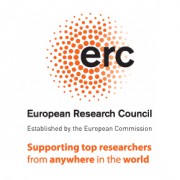Blog
Learned worlds around the globe
From 2 April to 4 June 2021, the SKILLNET project organized a series of webinars: ‘Republics of Letters around the Globe: Non-European and understudied European transnational learned and literary commonalities’. A string of historians gave presentations about early modern transnational learned communities in the Eurasian continent, shedding light on the essence of what constitutes a transnational scholarly and scientific community.
The ‘Respublica literaria’ is an exclusively European actors’ category, although its use was adopted in some colonized areas in the 19th century and has geographically expanded in the 19th and 20th centuries. Today, the phrase is widely used as historiographical term to capture the notion of transnational communities of learning and literature, also outside Europe. This means that a European actors’ category is used for situations in which actors never used the category. This does not need to be a problem if the category is merely used as historiographical shorthand to signal to a readership familiar with the idea of a Republic of Letters that we are dealing with a boundary-crossing community of scholars and scientists that travels, teaches, writes, publishes, and communicates across political or religious or linguistic boundaries. However, the use of the term also suggests that some of the key-characteristics that we ascribe to the Republic of Letters apply to those other cases as well. And that causes a triple confusion.
A fuzzy category of analysis
First, modern historians hardly agree on what the Republic of Letters actually was: some see it as the whole world of early modern European learning, including its institutions (libraries, universities, the book industry even), its media (letters, journals, books), and of course its people (scholars, but perhaps also patrons, scribes, couriers, often including women; but maybe also local school masters or ‘friends’ such as painters). Others regard the Republic of Letters largely as an epistolary network based on reciprocity, whereas some see it merely as a discursive ideal about the common good of res literaria (learning as such). If historians fail to define their own understanding of this phenomenon, they render the concept useless as an analytical category.
Second, there is a general tendency among intellectual historians to regard the Republic of Letters in idealistic terms according to its Enlightenment definitions as a community of religiously tolerant scholars who freely exchange information across boundaries. This dominant picture is unproblematically ascribed even to centuries in Europe in which the Respublia Literaria was not yet widely adopted as a concept in the first place (basically, the whole period up to the 1490s), or to periods in which those Enlightened ideas are anachronistic (for example the Erasmian Respublica Literaria of the 16th century). Again, this is analytically unhelpful.
The functional and semantic differentiation as an actors’ category is therefore only made fuzzier by modern historiographical usages, even when applied to Europe alone. Exporting the term to histories outside of Europe potentially confuses matters even further. Most historians who do so, luckily, hardly use the term as an analytical category: it’s rather more a general descriptive concept to signal that we are dealing with worlds of learnings in which people exchange intellectual ideas. As such, the concept is a stylistic devise to enhance the recognizability for a European audience and boost sales. The word is practically the same as the paler idea of a ‘learned community’.
In short, the confusion is caused by the silent conflation of emic and etic uses of the ‘Republic of Letters’.
Beyond the Republic of Letters
Yet, the question as to how helpful it is to use the category, calls up a much more important question: what worlds of learning were there next to the European Republic of Letters – that is, apart from the one that dominates in Anglophone historiography? And how did these communities work? What did they look like?
The webinar series ‘Republics of Letters around the globe’ tried to answer precisely those questions: what makes a scholarly community in the first place? Is that a network of long-distance communication? Is it a school of thought in which people across space but also across time and generations respond to one another? How important is the sharing of a canon of texts? Can we still speak of a ‘community’ if the only communication is that between the living scholars and the dead authors? Do you need to know one another to be part of the same community?
During the series, it appeared that there are far more means to establish connections than merely by letter: poems, commentaries, and gatherings (formalised, scripted, and ritualised ones, but also more or less spontaneous ones) are enough to create long-distance interaction, in particular if texts are exchanged and commented on. To detect communities or sub-communities, a shared discourse helps. There appear to be structural similarities between (1) the contemporaries of Aldus Manutius and Erasmus, who advocated a ‘humanist’ discourse against a constructed medieval barbarity; (2) the discourse of female scholars who found each other either through citation, epistolary communication or by word of mouth, and who converged on a discourse arguing for the natural capacity for women to think intellectually, thus challenging the patriarchal nature of society as whole; (3) the 19th-century black intellectuals in and around the Atlantic world who created a resistance discourse, reading history through a lens of African accomplishments and anti-imperialism, and using those to resist contemporary colonialism; and (4), the new generation of secularized Jews in the northern belt of Europe in the 19th century who attacked the conservatism of Rabbinic establishment and championed a Jewish Enlightenment.
Apart from use of discourse, the practice of movement proves essential. Mobility and travel are structural to all communities. Even in Japan, where there was no way of moving beyond the island and the input from outside was limited, there was high mobility between the urban centres of learning. We think perhaps that the letter allowed for immobility, but the letter was really a necessary stand-in for physical mobility. Mobility was a prerequisite for contact and investigation. Learned communities appear to be essentially mobile, because exchange stimulates the development of ideas, and because meeting in person helps to create trust.
What seems to be not essential is the ideal of free exchange crossing boundaries (or religion, politics, languages, gender). Contact between communities was often incidental and not structural, and not upheld as a positive ideal to strive after. Schools of thought were bent on consolidation. Contact with other types or contents of learning as a dialogue was not an essential principle, positively upheld as a virtue: to have that as a practice is not necessarily a result of an intentional philosophy to escape political gridlock. Dialogue was not a road to peace. It may be so, in the case of pietistic Jews, or unitarian Christians.
A further aspect of learned commonality is that a sense of belonging did not only took shape synchronically, but also diachronically through layers of commentaries on canonical texts, as in Jewish scholarship in early modern Europe or as in female scholarship. Through the study and the reading of past authorities a timeless community could be experienced, much like Italian humanists saw reading ancient authors as conversing with the dead. This shows also how important the cult of memory is in shaping the intellectual community: citation and interpretation work across the generations.
Another thing that transpired is that poetry was used very often by European women, but also in Central Asia, China, and Japan, and there also by women. In fact, we are overlooking the importance of poetry also for the male Republic of Letters: through poems on the occasion of all life-events or through verses in alba amicorum, personal connections were affirmed and remembered. Perhaps male-authored poetry is overlooked because of the abundance of prose letters as empirically more straightforward historical sources.
Every now and then, the question came up how to define the boundaries of the community in social or intellectual terms. In Japan scholars were poets. Learning and literature was equated (as in the Latin adjective literarius) and artists were regarded as the guardians of traditions due to their combination of text, calligraphy, and drawing. Dragomans in the Turco-Arabic-Persian realm were essential for cross-cultural communication and hence acted as the knowledge-brokers who in the history of the European Republic of Letters are regarded as core people in the scholarly networks. Different context, then, give reason to broaden the notion of participation in the learned community.
Finally, it proved hard to find emic terms such as ‘Respublica literaria’. This led to a more general sense among the presenters that the current use of the phrase Republic of Letters is often synonymous with the more prosaic and less situated expression ‘community of scholars’. This reflection leads me to conclude for now that the problem boomerangs on the Republic of Letters itself: this English translation dates from the early 18th century. A more often used translation was ‘Commonwealth of Learning’, and indeed that term is a more literal translation of the Latin phrase. We should be aware, however, that the Latin expression orbis literatus seems to have been equally popular to Respublica Literaria. The ‘Learned World’ might be less pronounced and appealing, but as an actor’s category that’s still in use today, it would also historically do a better job in grasping intellectual commonality across the globe.
Most of the presentations (some 20 minutes each) can be seen on our YouTube channel: https://www.youtube.com/playlist?list=PL1PxBidX2bpqf2WAmi2BOQd1eqFaBSKfd.



